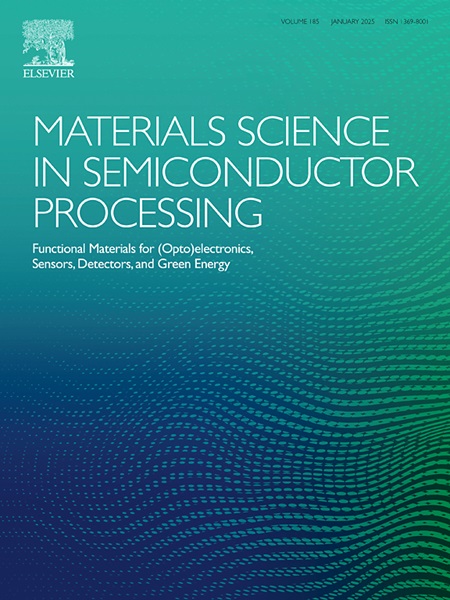研究电镀铜上双增强锡-9Zn 合金在老化过程中的微观结构和界面稳定性
IF 4.2
3区 工程技术
Q2 ENGINEERING, ELECTRICAL & ELECTRONIC
引用次数: 0
摘要
本研究探讨了添加 Bi 对 Sn-9Zn (SZ) 和 Sn-9Zn-5Bi (SZB) 合金的性能和焊接行为的影响。Bi 的加入大大提高了 SZ 的硬度,并将其熔化温度从 199 ℃ 降至 189 ℃,从而改善了焊接性能。显微结构分析表明,SZ/电镀铜在老化后会出现严重的 Cu5Zn8 分层现象,而 SZB/Cu 接头则由于含有小的 Bi 相而保持稳定,减缓了铜的扩散并稳定了界面层。热力学计算强调了 Zn 贫化在 Cu5Zn8 向 CuZn 相转变过程中的作用,探讨了 Bi 在防止过早分层方面的重要性。这项研究揭示了低熔点合金焊接机制的宝贵见解,有助于优化电子封装工艺和可靠性。本文章由计算机程序翻译,如有差异,请以英文原文为准。
Investigating microstructure and interfacial stability of Bi-enhanced Sn-9Zn alloy on electroplated Cu during aging
This study investigates the impact of Bi addition on the properties and soldering behavior of Sn-9Zn (SZ) and Sn-9Zn-5Bi (SZB) alloys. The inclusion of Bi significantly enhanced the hardness of SZ and reduced its melting temperature from 199 °C to 189 °C, leading to improved soldering performance. Microstructural analysis revealed that SZ/electroplated Cu experienced severe delamination of Cu5Zn8 after aging, while SZB/Cu joints remained stable by the small Bi phase, slowing Cu diffusion and stabilized interfacial layers. Thermodynamic calculations highlighted the role of Zn depletion in phase transformation of Cu5Zn8 into CuZn phase, exploring the importance of Bi in preventing premature delamination. This research reveals valuable insights into soldering mechanisms for low melting alloys, aiding in the optimization of electronic packaging processes and reliability.
求助全文
通过发布文献求助,成功后即可免费获取论文全文。
去求助
来源期刊

Materials Science in Semiconductor Processing
工程技术-材料科学:综合
CiteScore
8.00
自引率
4.90%
发文量
780
审稿时长
42 days
期刊介绍:
Materials Science in Semiconductor Processing provides a unique forum for the discussion of novel processing, applications and theoretical studies of functional materials and devices for (opto)electronics, sensors, detectors, biotechnology and green energy.
Each issue will aim to provide a snapshot of current insights, new achievements, breakthroughs and future trends in such diverse fields as microelectronics, energy conversion and storage, communications, biotechnology, (photo)catalysis, nano- and thin-film technology, hybrid and composite materials, chemical processing, vapor-phase deposition, device fabrication, and modelling, which are the backbone of advanced semiconductor processing and applications.
Coverage will include: advanced lithography for submicron devices; etching and related topics; ion implantation; damage evolution and related issues; plasma and thermal CVD; rapid thermal processing; advanced metallization and interconnect schemes; thin dielectric layers, oxidation; sol-gel processing; chemical bath and (electro)chemical deposition; compound semiconductor processing; new non-oxide materials and their applications; (macro)molecular and hybrid materials; molecular dynamics, ab-initio methods, Monte Carlo, etc.; new materials and processes for discrete and integrated circuits; magnetic materials and spintronics; heterostructures and quantum devices; engineering of the electrical and optical properties of semiconductors; crystal growth mechanisms; reliability, defect density, intrinsic impurities and defects.
 求助内容:
求助内容: 应助结果提醒方式:
应助结果提醒方式:


